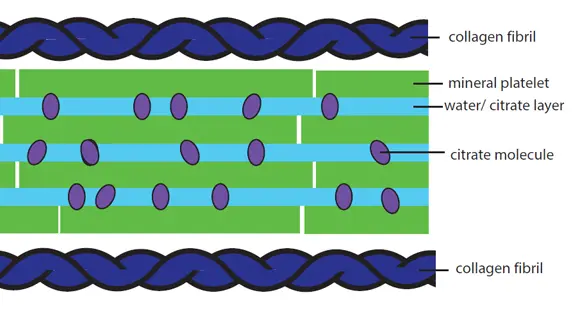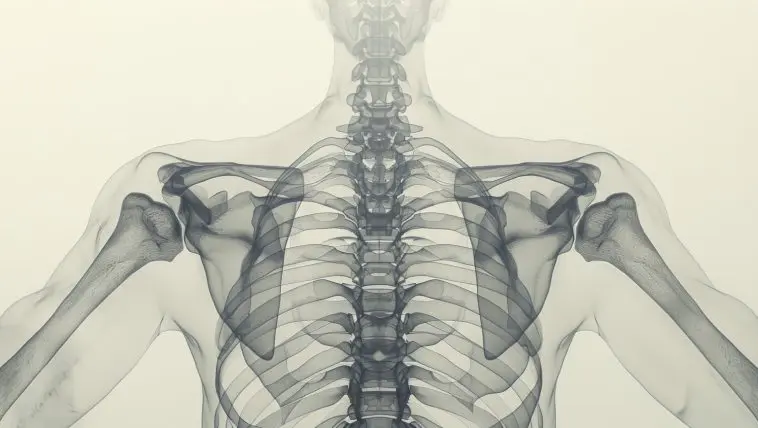[Originally published in 2014 as The More We Learn About Bone, The More Amazing It Is!]
The bones that make up the skeletons of animals and people are a marvel of engineering. As one materials scientist put it:1
…bone properties are a list of apparent contradictions, strong but not brittle, rigid but flexible, light-weight but solid enough to support tissues, mechanically strong but porous, stable but capable of remodeling, etc.
Some time ago, I posted an article about research that helps to explain why bones are so strong. The calcium mineral that makes up a significant fraction of the bone, hydroxyapatite, is arranged in crystals that are only about three billionths of a meter long. If the crystals were much longer than that, the strength of the resulting bone tissue would be significantly lower. What restricts the size of the crystals? According to previous research, the tiny crystals are surrounded by molecules of citrate. It was thought that the citrate latches onto the outside of the crystal, stopping it from growing.
Some interesting new research from the University of Cambridge and the University College London indicates that this is, indeed, what happens. However, it also indicates that citrate does much more than simply restrict the size of the crystals. It also helps to produce a cushion that allows bones to flex rather than break when they are under stress.
Using nuclear magnetic resonance spectroscopy (the same basic technique used in an MRI) and X-ray diffraction, the authors show that the citrate that surrounds the crystals of hydroxyapatite in bone mixes with water to form a gel that separates the crystals. This gel allows the crystals to slide against each other when the bone is stressed. In other words, the citrate/water mixture acts as a “shock absorber” that keeps bones from being too brittle. So not only does the citrate help to keep bones strong by reducing the size of the hydroxyapatite crystals, but it also helps to keep them flexible by trapping water to form a shock-absorbing gel between the crystals!2

The authors’ new model for the microscopic structure of bone is illustrated in the drawing above. The citrate molecules essentially “hold on” to the water, keeping it from leaking out as it cushions the mineral platelets and allows them to slide against one another. The authors suggest that this model is important because it might explain the changes that occur to bones when people have metabolic diseases like diabetes. If the disease affects the way citrate is incorporated into the bones, it will change the tissue at a microscopic level.
What really impresses me is the dual role citrate seems to play in bone tissue. Not only does it contribute to the strength of a bone, but it also contributes to the bone’s flexibility. This is particularly amazing because just a few years ago, no one had any serious ideas about why citrate is found in bone tissue in the first place. As the authors state:
Another factor that needs to be taken into account is the presence of citrate in bone. Its presence in bone is an accepted fact, but until 2010, there was no attempt to rationalize its presence within a structural model of bone mineral.
So in a matter of just four years, citrate went from a mysterious component of bone tissue to a molecule that plays at least two important roles in the tissue!
That’s what happens when you study incredibly well-designed systems. You keep uncovering new facets that demonstrate the ingenuity of their Creator!
References
- María Inés Sánchez Neira, “An efficient approach to the synthesis of a calcium phosphate bone-cement and its reinforcement by hydroxyapatite crystals of various particle morphologies,” PhD Thesis, Universidad de Santiago de Compostela, 2008 (Available online)
- Erika Davies, Karin H. Müller, Wai Ching Wong, Chris J. Pickard, David G. Reid, Jeremy N. Skepper, and Melinda J. Duera, “Citrate bridges between mineral platelets in bone,” Proceedings of the National Academy of Sciences of the United States of America, 2014, doi:10.1073/pnas.1315080111






